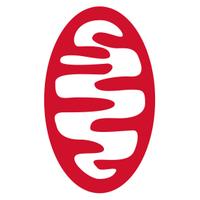
Zak Baker
@zak_bakes
Postdoctoral Fellow at Washington University in St. Louis
ID: 1199073699619655682
25-11-2019 21:13:50
23 Tweet
83 Followers
92 Following


After 10+ fantastic years in Madison, it is bittersweet to announce that my lab and I are moving to Test Account soon. I am so grateful to everyone at UW–Madison Biochem and Morgridge Institute for their support and guidance. Stay healthy, and come visit us in St. Louis! medicine.wustl.edu/news/pagliarin…


Happy to share this Cell Metabolism review from our group. Andrew Sung, Brendan Floyd, and I hope it has some useful lessons of how large-scale analyses can lead to focused mechanistic hypotheses and help functionalize orphan proteins. #mitochondria cell.com/cell-metabolis…



I am excited to post our new manuscript on CoQ pathway manipulation, led by Nathan Murray. Congrats to Nate and our multiple collaborators key collaborators! Small Molecule Modulation of the Archetypal UbiB protein COQ8 biorxiv.org/content/10.110…


Our new study, led by Alaumy Joshi, shows a critical requirement of cardiolipin (CL) for the stability of the mitochondrial Mg channel. This study uncovers a potentially novel role of Mg in the pathology of Barth syndrome, a genetic disorder of CL metabolism. academic.oup.com/hmg/advance-ar…

Happy to share our new mitochondrial proteome research review out today in Nature Reviews Molecular Cell Biology led by Zak Baker and Patrick Forny. The field has come a long way in the past 20 years, yet plenty of exciting new things to do! nature.com/articles/s4158… rdcu.be/dnmm3 #Mitochondria


Excited to share our new discovery of a mitochondrial isoprene transporter published today in Nature Cell Biology and led by Jonathan Tai! Interesting example of transporter dual functionality. #Mitochondria nature.com/articles/s4155…

Very (very!!) happy to share our latest publication, "PPTC7 maintains mitochondrial protein content by suppressing receptor-mediated mitophagy", out today in Nature Communications. 1/n nature.com/articles/s4146…

CoQ10 is a very hydrophobic molecule with poor bioavailability. In this new study, led by Laura Steenberge, we build on prior work to show that the much more soluble CoQ4 is sufficient to rescue diverse CoQ functions and can be targeted to mitochondria. doi.org/10.1016/j.jbc.…

Mitochondrial complex I construction relies on a patchwork of poorly defined "assembly factors." In work led by Andrew Sung, we used deep mutational scanning to elucidate NDUFAF6 function and predict variant pathogenicity. Taylor Lab Charlotte Alston nature.com/articles/s4225…


